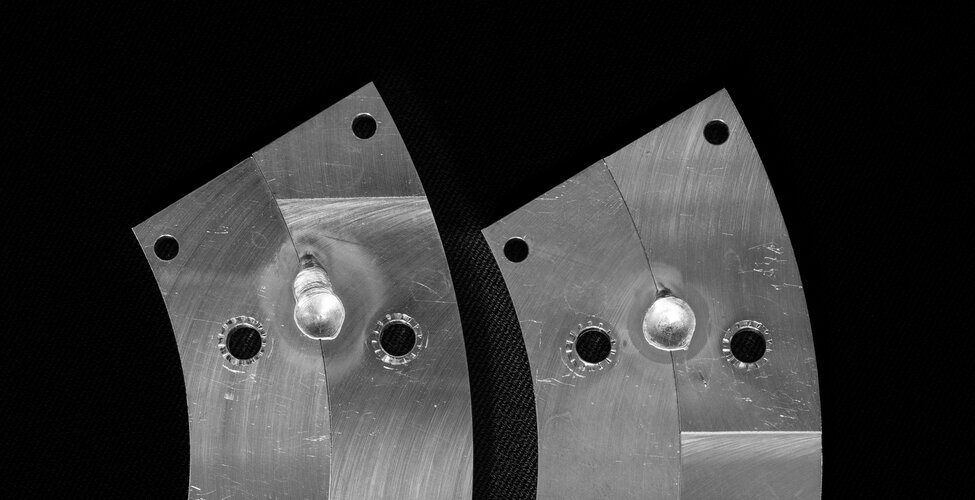TESS spots record-breaking stellar triplets
Thursday, 10 October 2024 20:28 Professional and amateur astronomers teamed up with artificial intelligence to find an unmatched stellar trio called TIC 290061484, thanks to cosmic "strobe lights" captured by NASA's TESS (Transiting Exoplanet Survey Satellite).
The system contains a set of twin stars orbiting each other every 1.8 days, and a third star that circles the pair in just 25 days. The discovery smashes the reco
Professional and amateur astronomers teamed up with artificial intelligence to find an unmatched stellar trio called TIC 290061484, thanks to cosmic "strobe lights" captured by NASA's TESS (Transiting Exoplanet Survey Satellite).
The system contains a set of twin stars orbiting each other every 1.8 days, and a third star that circles the pair in just 25 days. The discovery smashes the reco Millennium Space Systems completes key FOO Fighter milestone
Thursday, 10 October 2024 20:28 Millennium Space Systems, a Boeing [NYSE: BA] subsidiary, has swiftly completed the preliminary design review (PDR) of its Fire-control On Orbit-support-to-the-war Fighter (FOO Fighter) system just four months after receiving authorization to proceed. This milestone is part of the company's contract to deliver a constellation of eight satellites, a ground system, and mission operations.
"J
Millennium Space Systems, a Boeing [NYSE: BA] subsidiary, has swiftly completed the preliminary design review (PDR) of its Fire-control On Orbit-support-to-the-war Fighter (FOO Fighter) system just four months after receiving authorization to proceed. This milestone is part of the company's contract to deliver a constellation of eight satellites, a ground system, and mission operations.
"J GomSpace signs 3.6 MSEK contract with UK university collaboration
Thursday, 10 October 2024 20:28 A partnership of three UK universities has chosen GomSpace to support the development of a satellite mission under a contract valued at 3.6 million SEK. The collaboration, which includes universities from the Space South Central region covering Surrey and Hampshire, is part of the Joint Universities Programme for In-orbit Training, Education, and Research (JUPITER).
Their upcoming project,
A partnership of three UK universities has chosen GomSpace to support the development of a satellite mission under a contract valued at 3.6 million SEK. The collaboration, which includes universities from the Space South Central region covering Surrey and Hampshire, is part of the Joint Universities Programme for In-orbit Training, Education, and Research (JUPITER).
Their upcoming project, Astrobotic tests LiDAR system in partnership with Armstrong Trails
Thursday, 10 October 2024 20:28 Astrobotic recently tested its Light Detection and Ranging (LiDAR) system at Armstrong Trails in western Pennsylvania, marking an important step in refining this technology for space applications. LiDAR, which uses pulsed laser beams to measure distances, is crucial for mapping lunar surfaces in real time and supporting robotic spacecraft landings and operations.
The company partnered with
Astrobotic recently tested its Light Detection and Ranging (LiDAR) system at Armstrong Trails in western Pennsylvania, marking an important step in refining this technology for space applications. LiDAR, which uses pulsed laser beams to measure distances, is crucial for mapping lunar surfaces in real time and supporting robotic spacecraft landings and operations.
The company partnered with Aalyria secures NASA contract for Network Orchestration study and demo
Thursday, 10 October 2024 20:28 Aalyria, a company specializing in ultra-fast and secure directional mesh networks, has been selected by NASA to lead a study and demonstration of its Network Orchestration and Management System (NOMS). This project aims to show how Aalyria's Spacetime platform can dynamically manage NASA's Space Communications and Navigation (SCaN) network, focusing on supporting the Near Space Network (NSN) an
Aalyria, a company specializing in ultra-fast and secure directional mesh networks, has been selected by NASA to lead a study and demonstration of its Network Orchestration and Management System (NOMS). This project aims to show how Aalyria's Spacetime platform can dynamically manage NASA's Space Communications and Navigation (SCaN) network, focusing on supporting the Near Space Network (NSN) an Aetherflux joins Commercial Spaceflight Federation (CSF)
Thursday, 10 October 2024 20:03

Asteroid mining: A potential trillion-dollar industry
Thursday, 10 October 2024 18:52This request seems a bit unusual, so we just need to confirm you're human. Please complete the slider CAPTCHA by dragging it to the right. Thank you for your understanding!
If you believe this is an error, please contact our support team.
185.132.36.159 : d54def16-bfbf-4437-ad51-832d3004
X-37B to jettison payload module in orbital shift, Space Force announces
Thursday, 10 October 2024 17:02

U.S. Space Force taps commercial satellites for Hurricane Helene disaster relief
Thursday, 10 October 2024 16:04

Hera takes flight: Didymos, here we come
Thursday, 10 October 2024 16:00
The day began with an 85% chance that bad weather would cause a launch delay: it ended with ESA’s Hera mission successfully in space and en route to the Didymos binary asteroid system.
At 16:52 CEST (14:52 UTC) on 7 October 2024, Hera took to the skies aboard a SpaceX Falcon 9 rocket from Cape Canaveral Space Force Station in Florida, USA. After a smooth 76-minute ascent, the spacecraft separated from its launcher, and, a few minutes later, ESA’s ESOC mission operations centre in Germany assumed control of the spacecraft.
Here is what
Space isn't all about the 'race'—rival superpowers must work together for a better future
Thursday, 10 October 2024 15:50This request seems a bit unusual, so we just need to confirm you're human. Please complete the slider CAPTCHA by dragging it to the right. Thank you for your understanding!
If you believe this is an error, please contact our support team.
185.132.36.159 : 4b4b25a3-1695-4073-a410-c9e0258d
Space-made weld scrutinised in ESA lab
Thursday, 10 October 2024 12:31
ESA engineers have focused microscopes, hardness testers and an X-ray computer aided tomography machine onto a special aluminium weld just a single centimetre across – the historic result of the very first autonomous welding to be performed in space, and the first ESA has been involved with.
Negar Feher, CEO, Orbital Outpost X – Leading Women in Space
Thursday, 10 October 2024 12:18




